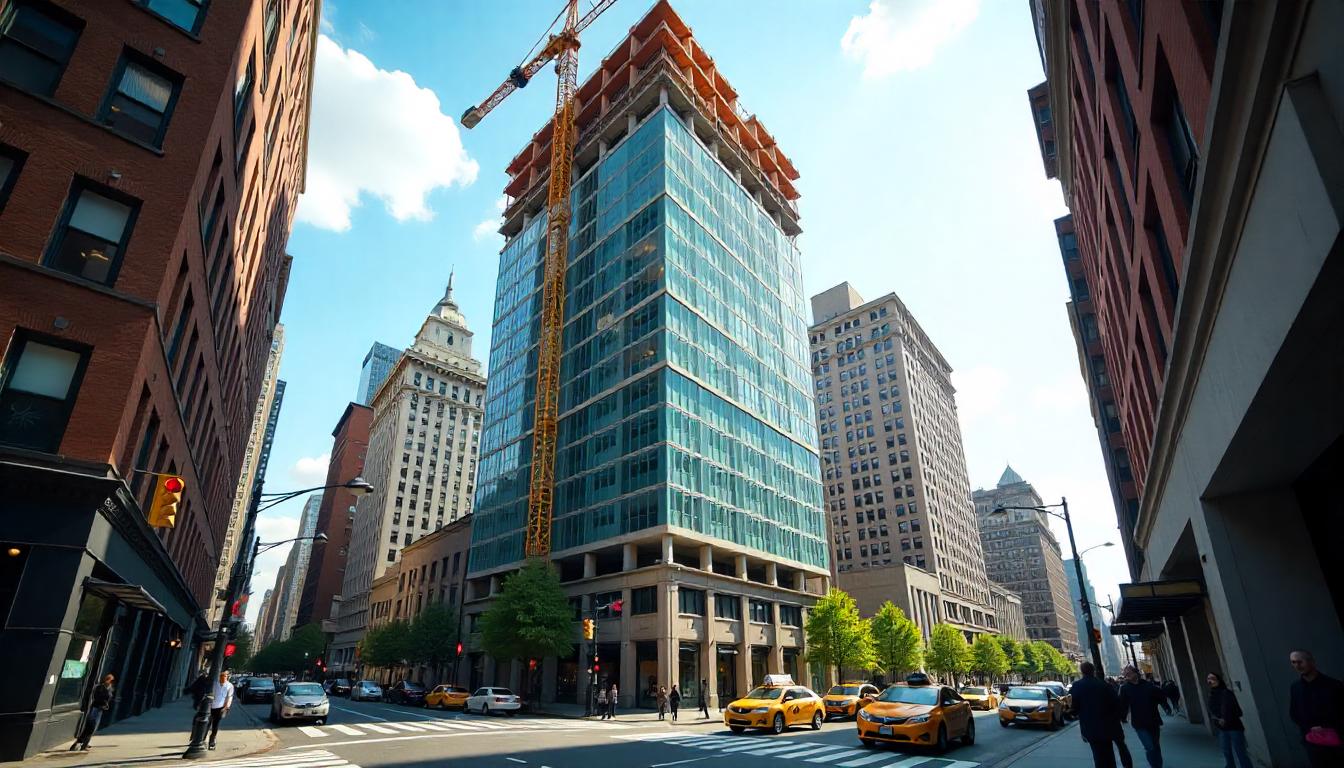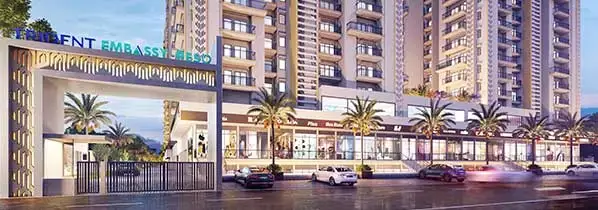
The Impact of Infrastructure Projects on Real Estate Value in 2025
A New Era of Infrastructure-Led Growth
In 2025, India finds itself in the midst of an infrastructure renaissance. With the Union Budget 2024-25 allocating a capital outlay of ₹11.11 lakh crore for infrastructure—a 3.4% increase from the previous year—the focus on connectivity, urban transformation, and regional integration has never been sharper (Source: Ministry of Finance, Union Budget 2024-25). From expressways slicing through underdeveloped regions to metro lines bringing suburban zones closer to city centres, the domino effect on real estate markets is visible, measurable, and accelerating.
This is especially evident in emerging corridors such as Panchkula, Zirakpur, and Mohali—regions where developers like Trident Realty are unlocking value through strategic township development.
The Infrastructure-Real Estate Nexus: A Growth Engine
Infrastructure is the lifeblood of urban progress—and in India, it's fueling real estate momentum. Enhanced roads, metro extensions, and airports are shortening travel times, boosting economic activity, and elevating neighborhood appeal. According to JLL India’s 2024 land acquisitions report, developers purchased 2,335 acres of land worth ₹39,742 crore, a 20% increase from 2023—91% of it outside Tier-I cities—underscoring confidence in infrastructure-led growth
For developers like Trident Realty in fast-rising regions such as Panchkula and Mohali, this synergy of connectivity and lifestyle is the foundation of vibrant, future-ready communities.
The logic is compelling: infrastructure enhances accessibility, reduces commute times, and attracts commercial hubs, schools, and hospitals—key drivers of real estate demand.
In the Tricity region, the development of arterial roads like PR-7 (Airport Road) and upcoming Chandigarh metro extensions has strengthened real estate demand. According to JLL India, land along major infrastructure corridors is seeing increased investor interest, with price appreciation projected at 15–20% in well-connected zones. Panchkula, benefiting from proximity to both Zirakpur and Chandigarh, is riding this upward curve.
Major Infrastructure Projects Shaping 2025’s Real Estate Boom
India’s infrastructure push in 2025, backed by the National Infrastructure Pipeline (NIP) with ₹111 lakh crore in investments, is transforming urban and semi-urban landscapes. Below, we explore key projects driving real estate growth, with a spotlight on the Tricity region and other high-potential corridors.
Expressways Fast-Tracking Property Appreciation
Expressways are redefining connectivity, turning once-distant suburbs into real estate hotspots.The Delhi–Amritsar–Katra Expressway, a key Bharatmala project spanning 670 km, is set to reduce travel time between Delhi and Amritsar to about 4–5 hours upon completion by 2025–26, according to the Ministry of Road Transport and Highways. A 135 km stretch through Haryana is already operational, enhancing regional access. This improved connectivity is fuelling real estate interest in areas like Panchkula and Mohali, where proximity to the expressway is making premium projects more attractive to end-users and investors alike.
In Delhi-NCR, the Dwarka Expressway continues to shine. This 27.6-km, 16-lane corridor, fully operational in 2025, has triggered a 58% year-on-year price hike in Gurugram’s Sector 37D and Dwarka Sector 21, according to a CREDAI-Colliers-Liases Foras study. While Trident Realty’s primary focus is the Tricity, the Dwarka Expressway’s success underscores the broader impact of expressways on real estate, a model replicated in Punjab and Haryana.
Airports Soaring Demand in New Hubs
Airports are economic magnets, drawing businesses, hotels, and residential projects. In the Tricity, the Shaheed Bhagat Singh International Airport in Chandigarh is undergoing a terminal expansion, set to handle 10 million passengers annually by late 2025. This upgrade, detailed in a 2024 Economic Times report, is driving real estate activity in Mohali, where commercial spaces and mid-segment homes are in high demand. Trident Realty’s developments in Mohali, such as hypothetical gated communities near the airport, are poised to benefit, offering residents proximity to a global transit hub.
Further afield, the Noida International Airport at Jewar, operational from April 2025, is reshaping Greater Noida’s real estate market. A 2025 Anarock report notes a 121% price increase in Greater Noida since 2023, driven by airport-led growth. While not in Trident’s immediate footprint, this trend highlights the airport effect, which Mohali is beginning to experience.
Metro Corridors Redefining Urban Liveability
Metro expansions are transforming how Indians commute and where they choose to live. In the Tricity, while Chandigarh’s metro project is still in planning, the region benefits from enhanced road connectivity linking to metro hubs in Delhi-NCR. For instance, the Delhi Metro’s Grey Line extension to Najafgarh, completed in 2024, has indirectly improved access to Haryana’s micro-markets, per a LiveMint analysis. In Panchkula, Trident Hills residents enjoy quick road access to Chandigarh and Delhi’s metro network, enhancing liveability.
Elsewhere, Bengaluru’s Namma Metro Phase 3, connecting Hebbal to Kempegowda International Airport by 2026, is already driving a 30% price hike in North Bengaluru, according to a 2025 CBRE India report. This transit-oriented development (TOD) model, where residential and commercial hubs cluster around metro stations, is a blueprint for future growth in the Tricity, where improved road networks mimic metro-like connectivity.
Liveability: The Heart of Infrastructure’s Appeal
Infrastructure does more than boost property prices—it makes life better. Shorter commutes, access to quality schools, hospitals, and malls, and greener urban spaces elevate an area’s appeal. In Panchkula, the Chandigarh-Zirakpur-Panchkula corridor, widened in 2024, has cut travel time to Chandigarh’s Sector 17 to under 15 minutes. This, coupled with proximity to reputed schools like The Gurukul and hospitals like Alchemist, makes Trident Hills a sought-after address for families.
A 2025 NITI Aayog report highlights that infrastructure-led urbanisation improves quality of life by 25% in suburban areas, driving demand for amenity-rich projects. Trident Realty’s focus on sustainable townships, with features like green spaces and community centres, aligns with this trend, offering residents a lifestyle that balances connectivity and comfort.
Tier-2 Cities: The Next Frontier
While Tier-1 cities like Delhi-NCR and Bengaluru dominate headlines, Tier-2 cities like Panchkula, Mohali, and Zirakpur are emerging as real estate powerhouses. The Ministry of Road Transport and Highways (MoRTH) reports that 50% of India’s 2025 highway capex targets Tier-2 connectivity, unlocking new markets. In Zirakpur, for instance, the PR-7 Airport Road, connecting to the Chandigarh airport, has spurred a 10% annual price rise since 2023, per a Moneycontrol analysis.
Trident Realty’s presence in these cities positions it to tap into this growth. An independent floor in Panchkula, priced between ₹2.2 to 3.5 Cr., caters to middle-class buyers seeking value and connectivity. As Tier-2 cities become economic hubs, Trident’s projects offer investors high rental yields and capital appreciation.
Challenges: Navigating the Road Ahead
Infrastructure’s promise comes with hurdles. Land acquisition delays, environmental clearances, and funding gaps can stall projects. The Delhi-Amritsar-Katra Expressway, for instance, faced initial land disputes, though it remains on track for 2025 completion, per a 2024 Economic Times update. Sustainability is another concern, with projects like the Chandigarh-Zirakpur corridor incorporating green medians and solar lighting to mitigate environmental impact.
Trident Realty can address these challenges by partnering with local authorities and adopting eco-friendly designs, ensuring projects like Trident Hills remain future-proof. Buyers, too, should verify developers’ RERA compliance—as of January 2025, 1.38 lakh projects are registered nationwide—to ensure transparency and timely delivery.
Opportunities for Buyers and Investors
Infrastructure-adjacent properties are goldmines for 2025. A 2025 Knight Frank India report forecasts a 15-20% price rise in Mohali and Panchkula due to airport and expressway proximity. Investors can target commercial spaces near transit hubs, where rental yields reach 8-10%, per a JLL India analysis. Trident Realty’s offerings, from luxury villas to affordable flats, cater to diverse needs, making them ideal for both end-users and investors.
Tips for Smart Investment:
Focus on Connectivity: Choose properties near expressways, airports, or planned metro lines for maximum returns.
Verify Infrastructure Timelines: Check project completion dates on NHAI or MoRTH portals to align investments.
Opt for Mixed-Use Projects: Townships like Trident Hills, with retail and recreational amenities, offer holistic living.
Assess Liveability: Prioritise areas with schools, hospitals, and green spaces for long-term value.
The Future: A Connected, Prosperous India
By 2030, India’s real estate market is projected to hit $1 trillion, driven by infrastructure and urbanisation, per a 2025 Anarock forecast. The Tricity region, with its blend of Tier-1 proximity and Tier-2 affordability, is at the heart of this transformation. Projects like the Smart Cities Mission, targeting cities like Chandigarh, will integrate technology and sustainability, further boosting real estate appeal.
Trident Realty’s vision aligns with this future, delivering projects that marry connectivity with quality. As expressways shorten distances and airports open new horizons, 2025 marks a pivotal year for buyers and investors to stake their claim in India’s growth story.
Conclusion: Seize the Infrastructure Advantage
From the widened roads of Panchkula to the soaring ambitions of Mohali’s airport, India’s infrastructure boom is paving the way for a real estate renaissance. For developers operating in the Tricity’s most promising micro-markets, this is a chance to redefine modern living. As property values climb and liveability soars, the question isn’t whether to invest but where.
As India continues to pump capital and policy muscle into infrastructure, real estate buyers must look beyond glossy showrooms and into the blueprint of the future. Whether it’s a metro station being planned 5 km away or a new expressway that cuts travel time in half, infrastructure is the truest marker of real estate value in 2025.
And for developers like Trident Realty, building not just homes but communities around these growth engines is what sets them apart in India’s evolving real estate story.









